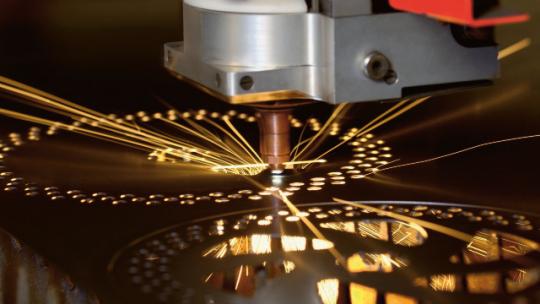You knew they were heading your way: the laser cutters. The next gumball machine design demanded it, and they are obviously just too damn useful.
On a typical open project night at Cambridge Hackspace, lasers are always the featured attraction, the highlight of the tour.
The big laser cutter always seems to be working, burning its way through projects from acrylic boxes to wooden coasters.
So it's time to figure laser cutters out.
Not only do you need to cut the clear acylic required for gumball machine #2, you also want to create some boxes to contain the guts of your messy electronic projects, and some gears, and a few cardboard waves (the ocean kind) for an automata project.
Unfortunately, the typical laser set-up and workflow is a mishmash of software programs, and platforms, cobbled together in a way that's probably unique to every laser cutting operation.
So you begin deconstructing...
Laser Cutting at Cambridge Hackspace
It starts with Inkscape, the open source vector program -- which Cambridge Hackspace favors for prepping laser files.
Inkscape's primary value: it's free and open source (Adobe Illustrator appears to be the expensive, full-featured alternative.)
Here's the Inkscape logo.

Of course, downloading the above, you realize it should be a .svg file. But that's not the default on the web. We're bitmap here on the web, not vector. So that will be a minor hurdle.
The Hardware
Cambridge Hackspace has two laser cutters which are always referred to as "Chinese." In other words, no brand, just commodity laser cutters from China.
The sizes are 30 x 50 cm (12" x 20") and 60 x 100 cm (24" x 40")
Their preferred format is .dxf, and the path goes from Inkscape to "RDWorks" which came with the Chinese machines (because it's the software that controls the motors).
These lasers will cut any line in a color that you pre-select and identify as the cutting color.
You attend an introductory laser cutting workshop, and leave with...
Two laser cutting terms worth knowing:
Vector Engraving -- aka cutting. Set the laser power to high.
Raster -- aka etching. You lower the laser power, and increase the speed, so that it just scores the material instead of cutting it.
And a Strategic Outsourcing
The software, the workflow, the hardware... it is a lot to absorb in one gulp.
So while you learn Inkscape, you outsource the clear acrylic "case" for gumball machine #2 to 100kGarages. This time a local architectural model-making shop takes on the job, elevating the project to a level where it can be put on display at District Hall.
With that big piece taken care of, you can move on to the smaller support technologies you want to tap.
Like how to communicate instructions to passers-by.
